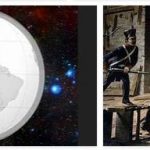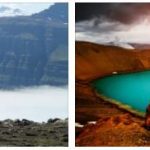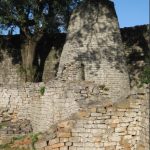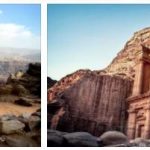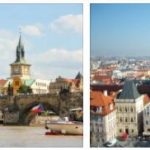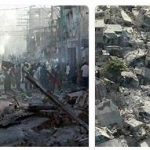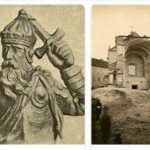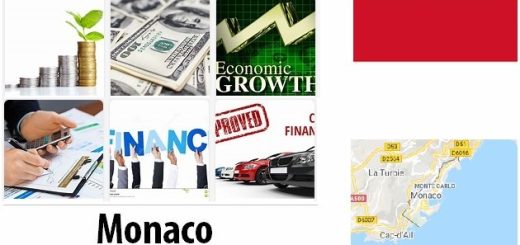Iceland History Timeline
According to ehistorylib, Iceland is a Nordic European island state, located where the North Atlantic meets the Arctic Ocean on the mid-Atlantic ridge. The country has 321,857 residents and an area of 103,000 km², making it Europe’s most sparsely populated country. The country’s capital and largest city is Reykjavík, which together with the surrounding areas in the southwestern part of the country is home to two thirds of the country’s population.
Iceland is volcanically and geothermally active. The interior of the country consists mainly of a plateau of sand and lava, mountains and glaciers, from which a series of glacial rivers run towards the sea through the lowland areas. Iceland is warmed by the Gulf Stream and has a temperate climate despite its location relatively high to the north right up to the Arctic Circle.
Recent archaeological excavations (2011) have found the ruins of a hut in Hafnir on the Reykjanes Peninsula, and dating using the carbon 14 method indicates that it was abandoned somewhere between 770 and 880, suggesting that Iceland was populated somewhat earlier 874. The archaeological finds may also indicate that the monks left Iceland before the Norwegians arrived.
Geologically, Iceland is a young country located on a hot spot of the same name on the Mid-Atlantic ridge that stretches across the country. This location means that the island is very geologically active with many
volcanoes, including Hekla, Eldgjá, Herðubreið and Eldfell. Iceland has many geysers, including Geysir, from which the word is derived, as well as the famous Strokkur, which erupts at 5-10 minute intervals. After being dormant for a while, Geysir started erupting again after a series of earthquakes in 2000. Its activity level has since slowed down a bit and it now erupts about a couple of times a day.
TIMELINE:
870-930 – Among the oldest known books written in Iceland are the sagas, which tell the story of the country.
874 – According to Landnámabók, Iceland was settled when the Norwegian chief Ingólfur Arnarson became the first permanent settler.
990-1000 – Christianity was introduced around 990-1000, although the old Nordic religion wasstill practiced by part of the population several years later.
1402 – Black Death strikes Iceland twice, first in 1402-04 and later again in 1494-95. In the first outbreak, 50-60% of the population died, while the second killed 30-50%
19th century – A violent measles epidemic kills nearly a third of the country’s population.
1783 – Laki volcano erupts with devastating results. The years that followed the eruption are known as “Móðuharðindin” (“The Difficult Fog”), and here about half of the country’s livestock perished, leading to a severe famine with a decline in population of about a quarter. The eruption created clouds of dust and fog that reached most of Europe as well as parts of Asia and Africa for months after
1874 – Denmark seemed Island have a constitution and limited home rule, which was expanded in 1904, when Hannes HAFSTEIN became the first Minister of Iceland to the Danish government.
1918 – The country becomes independent, first as a kingdom and from 1944 as a republic.
1940 – May. In the run-up to World War II, Iceland, like Denmark, was generally neutral, but with the German occupation of Denmark on 9 April 1940, the Althingi dismissed the Danish king as regent and took over Iceland’s foreign policy as well as all the country’s other tasks. in Denmark. A month later, Britain invaded and occupied Iceland, violating Icelandic neutrality. In 1941, the United States took over the occupation of the country, then Britain be able to free the troops for other tasks; this arrangement was hesitantly accepted by the Icelandic authorities.
1944 – When Iceland formally becomes a republic from June 17, it becomes Sveinn Björnsson as the country’s first president.
1958-1976 – The Cod War is a series of disputes over fishing rights
in the Atlantic, which took place between Iceland and Britain.
1986 – Iceland hosts the Reykjavik Summit between US President Ronald Reagan and Soviet leader Mikhail Gorbachev, which takes significant steps toward nuclear disarmament. A few years later, Iceland became the first country to recognize
Estonia, Latvia, and Lithuania’s independence from the Soviet Union.
2010 -21. March – a large volcanic eruption site in Eyjafjallajökull in southern Iceland. The eruption here was the first since 1821, and on April 14 of the same year a new large eruption followed in the same area. A total of about 1,000 people were evacuated in the two outbreaks. The cloud of volcanic ash formed in the same connection created major aviation problems over large parts of Europe.
2011 – May 21 – Another large volcanic eruption took place on May 21, 2011 from Grímsvötn, a volcano that lies beneath a thick layer of ice in Europe’s largest glacier, Vatnajökull. Grímsvötn is one of Iceland’s most active volcanoes, and this eruption was stronger than the eruptions in Eyjafjallajökull the year before. The eruption threw ash and lava 20 km into the atmosphere, creating a heavy cloud of dust, which for a time was feared to affect air traffic over large parts of northern Europe, but the consequences were not nearly as severe as the year before.

